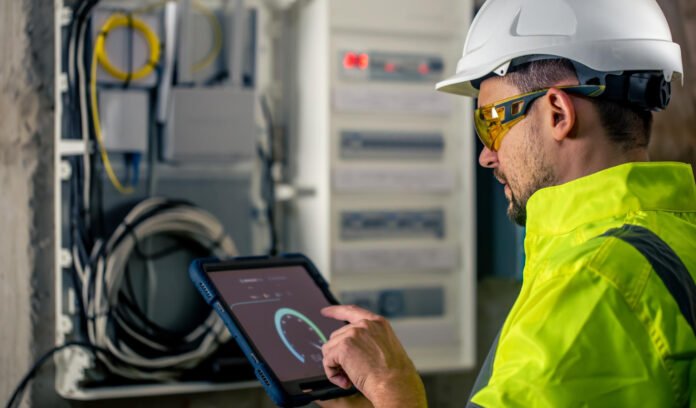Electrical safety has always been a top priority across industries and households alike, driven by the inherent risks associated with electricity. In recent years, significant strides have been made in advancing electrical safety through technology. From smart devices that enhance monitoring to innovations in personal protective equipment, these advancements are transforming how we prevent, detect, and respond to electrical hazards.
The Role of Smart Technology
One of the most impactful changes in electrical safety has been the integration of smart technology. Smart circuit breakers and outlets are now equipped with the capability to detect issues such as overloads and short circuits more efficiently than traditional systems. These devices automatically shut off the power supply when a fault is detected, preventing potential fires and electrical shocks.
Smart sensors also play a vital role in enhancing safety. These sensors monitor various parameters like temperature, current flow, and electrical load in real-time, providing critical data to prevent malfunctions. They can be connected to mobile apps or centralized systems, allowing users to receive alerts and manage electrical systems remotely. For example, if a sensor detects overheating in an electrical panel, it can trigger an alert that helps avert a potentially dangerous situation.
Wearable Technology for Workers
For those who work directly with electrical systems, wearable technology has become an essential tool in boosting safety. Wearable devices embedded with sensors can monitor the wearer’s physical conditions, such as heart rate and body temperature, ensuring they remain within safe limits during their work. These devices also have the potential to alert workers and supervisors when electrical exposure is detected, allowing for rapid responses that reduce the risk of injury.
Additionally, augmented reality (AR) glasses have been introduced to provide real-time data and guidance while working on complex electrical systems. By overlaying important information directly into the worker’s field of vision, AR glasses enable better decision-making and reduce the chances of human error, ultimately enhancing safety on the job.
Arc Flash Incident Prevention and Safety
One of the most serious risks in electrical work is an arc flash incident, where an electrical arc generates intense heat, pressure waves, and ultraviolet radiation. These incidents can cause severe injuries or even be fatal, making prevention crucial. Advanced technology has improved the ability to detect and prevent arc flash incidents through real-time monitoring and enhanced PPE. Smart circuit breakers and sensors can identify conditions that may lead to an arc flash, automatically shutting down power before a dangerous situation escalates. Modern PPE designed for arc flash protection, including fire-resistant fabrics and smart helmets with built-in alert systems, provides an additional layer of safety for workers, reducing the risk of harm during high-voltage tasks.
Advances in Personal Protective Equipment (PPE)
Technology has also improved the quality and functionality of personal protective equipment. Modern PPE includes materials that offer higher resistance to electric arcs and flash burns, two of the most dangerous risks associated with electrical work. Advanced PPE not only withstands greater levels of electrical exposure but is also designed for comfort and flexibility, which encourages consistent use among workers.
Moreover, recent developments in smart PPE include helmets and gloves fitted with sensors that detect the presence of electrical currents. These sensors issue warnings to the wearer if they approach a live circuit, providing a crucial additional layer of safety when working in complex environments.
AI and Predictive Maintenance
Artificial Intelligence (AI) has made its way into electrical safety protocols, offering capabilities that transform maintenance strategies from reactive to predictive. AI systems can analyze vast amounts of data collected from smart sensors, identifying patterns that indicate potential problems before they result in failures. This predictive maintenance model reduces the risk of unforeseen electrical incidents and helps companies maintain the reliability of their electrical systems.
For example, if an AI system detects a gradual increase in resistance within a circuit, it can flag it as a potential problem. Maintenance teams can then address the issue before it escalates into a dangerous situation. This proactive approach not only enhances safety but also extends the lifespan of electrical equipment and reduces downtime.
Future Directions and Challenges
While technological advances in electrical safety have made significant progress, challenges remain. Implementing these technologies can be costly, and smaller businesses may struggle with the financial burden of upgrading their systems. Additionally, ensuring the interoperability of various safety systems can be complex, as not all technologies are designed to work seamlessly with others.
However, the benefits of improved electrical safety are undeniable. As technology continues to evolve, the future holds great promise for further innovations that will make electrical systems safer for workers and the general public alike.
Also Read :Choosing the Right RV Pedestal: Key Features & Tips for Making the Best Choice
Conclusion
The integration of technology in electrical safety has brought significant changes, enhancing how risks are monitored, managed, and mitigated. From smart sensors and wearable devices to AI-driven predictive maintenance, these advancements are vital for protecting people and assets. As more sectors embrace these technologies, we can look forward to a future where electrical safety reaches new heights, protecting both lives and livelihoods.

